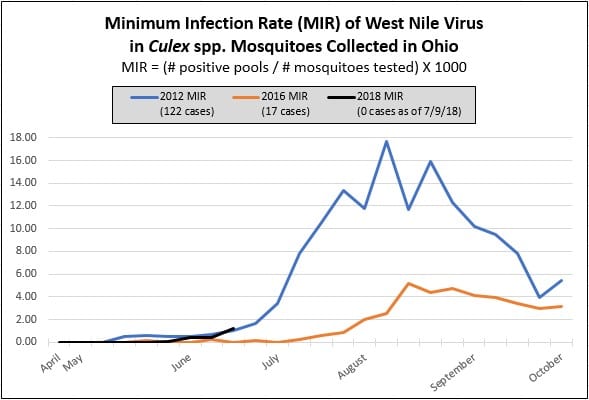West Nile virus activity has been increasing, and it has now been detected in mosquitoes in 14 counties as of noon on 7/9/18. Of the 4,832 pooled mosquito samples (141,835 mosquitoes total) tested so far, 110 samples have tested positive from Athens (1), Delaware (1), Franklin (43), Hamilton (1), Hancock (1), Licking (4), Lucas (25), Portage (12), Richland (3), Ross (1), Stark (1), Summit (15), Tuscarawas (1) and Wood (1) counties. This is up from 26 positive samples reported in the last message. No human cases have been reported so far.
Here is a graph that shows where we are this year as of week 25 with infection rates in mosquitoes compared to 2012, a high WNV activity year (blue line), and 2016, a relatively low WNV activity year (orange line):
For more information, see the current Ohio arbovirus surveillance update at http://www.odh.ohio.gov/arboupdate. The data on this website was last updated on 7/9/18 and will be updated each Monday thru mosquito season.



